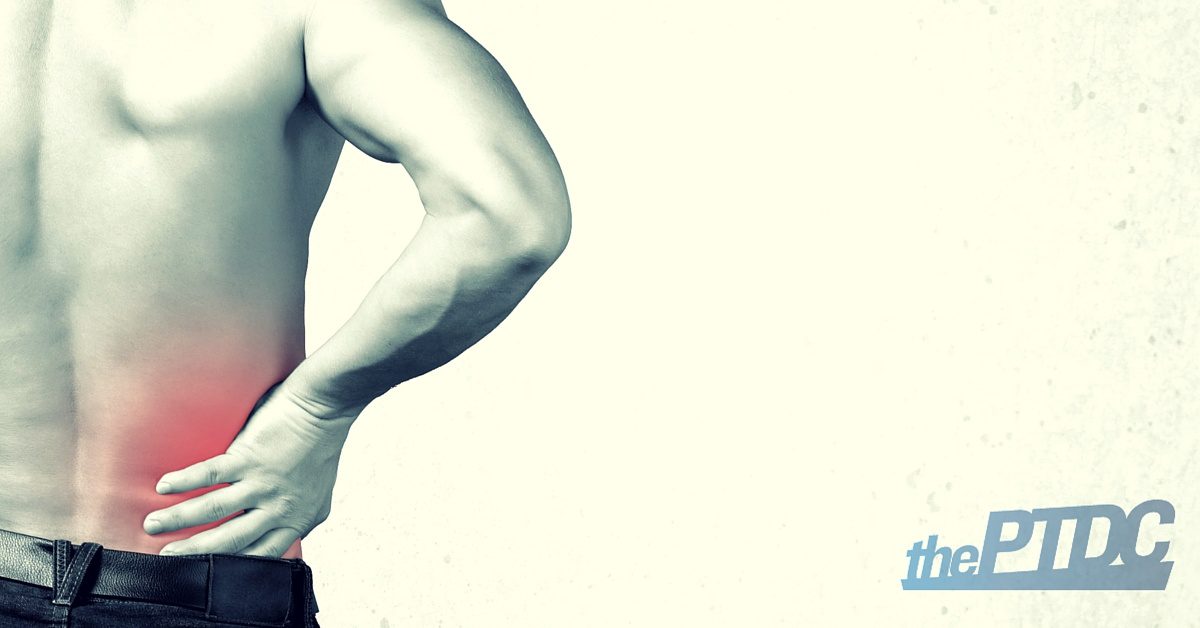Your client is complaining of low-back pain. She could be sore, or it could be something else. Is there something you can do to alleviate the pain?
There is.
Lower back pain commonly occurs when there's a lack of hip extension flexibility. Our bodies need hip extension when we're standing up from a seated position and pretty much with every single step we take. If the body can't extend through the hips, it's going to extend through the lower back and add stress to the spine and its discs.

In other words, you (or your clients) will experience low back pain.
To address this problem, here's how to see if your client has a hip extension problem and what you could do about it, if that's the case.
Check for extension.
Have your client stand with feet together, reach both hands toward the ceiling, and start to reach behind them, arching his or her back in the process.
We're looking for your client to have a nice C-shape without pain, stiffness, or shaking in the abs. However, note that it's common for people who can't extend through the hips to bend their knees when trying to reach backward.
I'd recommend checking this at the beginning of your training session, and then picking one of the below corrective strategies that would fit best with the rest of the workout.
Pick from one of these corrective exercises.
I've found one of these three exercises to improve hip extension. You don't need to do them all at once. Just start with one, preferably the first one:
- Hip flexor stretch: 1 set for 30 seconds
- Single leg bridges (click here for video): 1 set of 10 reps (hold for 2 seconds for each rep)
- Cross crawls (click here for video): 1 set of 10 reps (hold for 2 seconds for each rep)
Once you've done the exercise, have your client perform the extension assessment again after the exercise.
If the extension has improved, that's perfect! Keep that exercise in the database and use it in future workouts with that client. If it didn't improve the reach (better range of motion or less strain, for example), try the next exercise on the list. Some people have limitations that won't necessarily improve right in front of your eyes. For those people, I'd recommend performing both hip flexor stretches and single-leg bridges as a nice warm-up before working out from thereon.
On the other hand, if the client is in pain while performing these exercises, then it's likely they have a medical or neurological problem and should consult with their local movement-based chiropractor or physical therapist.

Advise your client to perform the exercise that helps about 3-4 times per day, certainly before he engages in any physical activity or workouts.
Continue performing the extension assessment at the beginning of every single session with your client. If you ever notice decreased range of motion or decreased comfort during the session, make sure not to skip out on these prep exercises. You can now work on improving flexibility in your client's hips and posterior chain.
With improved flexibility in the hips, guess what area is also less stressed? You guessed it, the lower back! Your client will now have better technique with the additional exercises you've selected for rest of the workout. Their performance will be better, and best of all, you'll look like a genius.
More articles like this:
- The Real Reason People Must Squat Differently by Ryan DeBell
- Planks: The Magic Sauce to Fix Hip Tightness and Increase Mobility by Dean Somerset
- The Hip Joint and Why We Can't All Squat the Same by Dean Somerset









